How to grow clematis – expert tips for these popular climbing plants
Use our expert guide to find out how to plant and grow clematis successfully
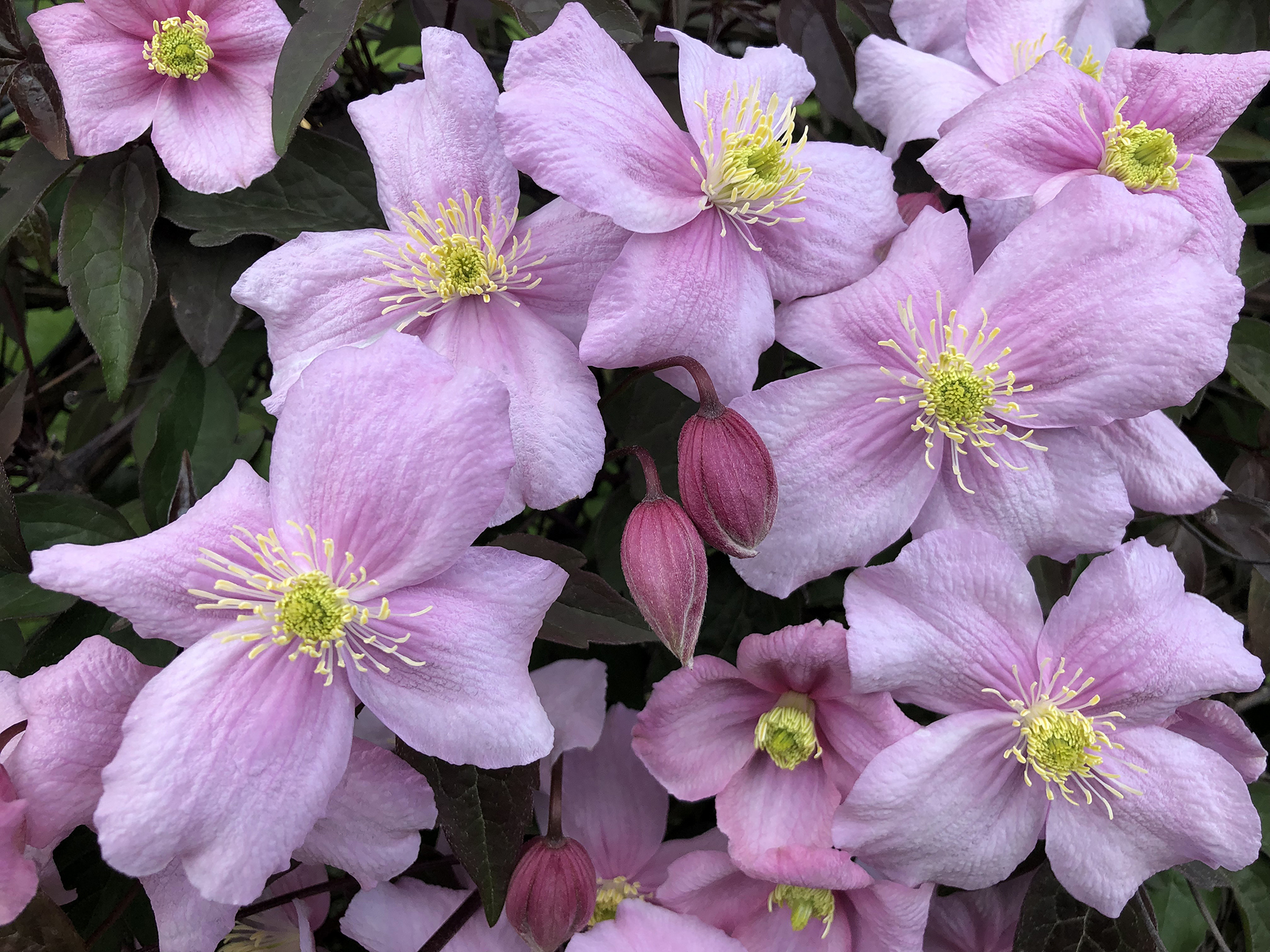

Clematis produce an abundance of color and scent. There is a different type of clematis for every month of the year – and many of them can be planted now.
If you love clematis – and, we don't blame you, they are some of the best climbing plants you can put into your backyard – grow a variety of species to enjoy their bloom 365 days of the year.
Below, we tell you which varieties to choose for color, scented and coverage, when and where to plant them – and how to care for clematis.
Which clematis to grow?
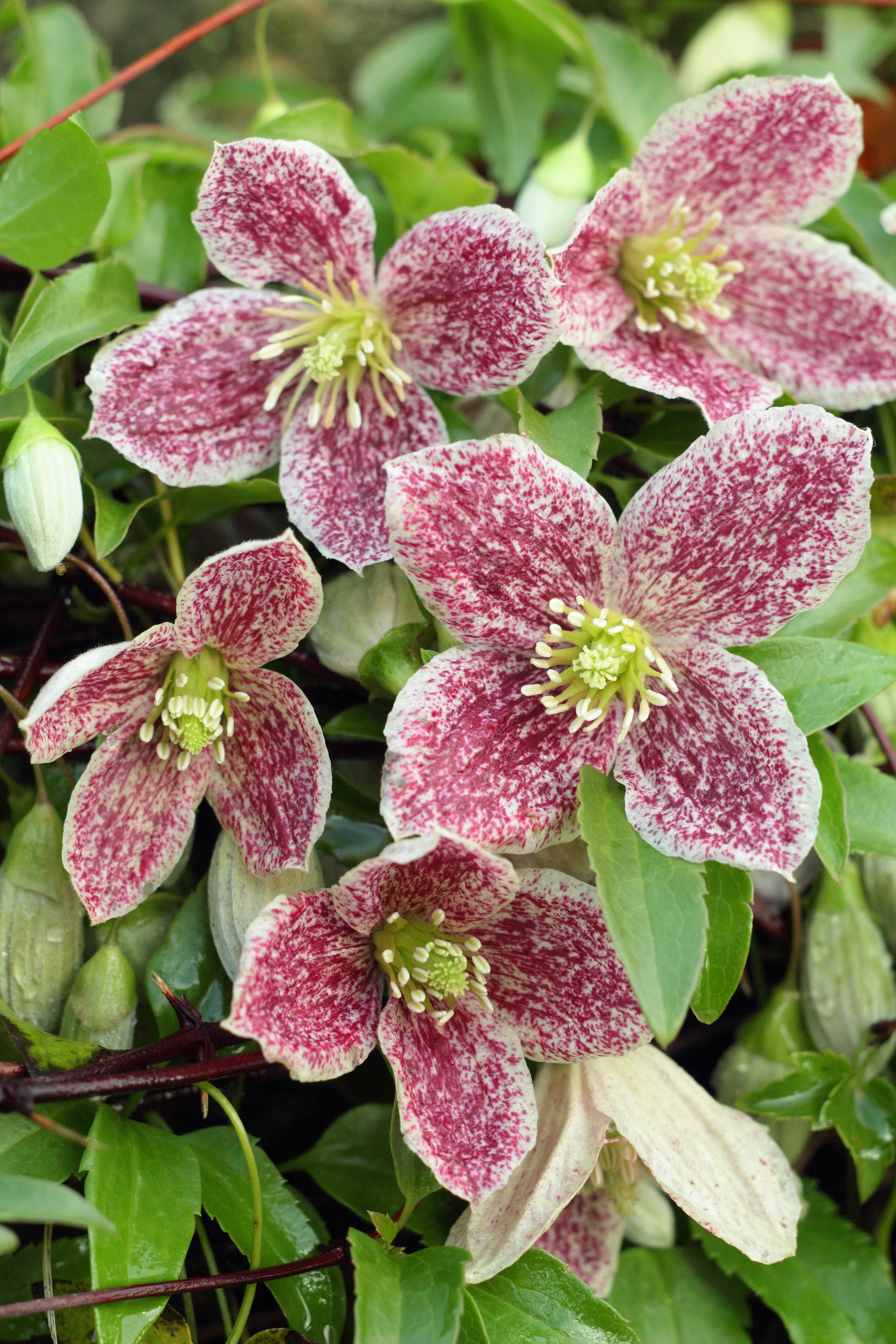
‘There are so many different types of clematis vines and depending upon the species and cultivar, they can offer blooms starting in the spring and span into early fall,’ enthuses Maryland-based landscape architect and designer Kirsten Coffen.
Clematis are amongst the best climbing plants with flowers you can put into your borders – and there is a wide range of varieties to choose from when deciding which are the best clematis to grow. Many are also suited to containers if you want to grow clematis in pots.
Kicking off the show are the spring-flowering forms: C. alpina and C. macropetala; good cultivars include powder-blue ‘Wesselton’ and ‘Frances Rivis’. And come May, the sublime scents of C. montana and C. armandi, begin to perfume the air.
Early summer sets the stage for the well-known big-flowered clematis, such as pink and white striped ‘Nelly Moser’; then, in July, the reliable C. viticella forms (such as ‘Madame Julia Correvon’) begin to bloom, as do fragrant stars C. x triternata ‘Rubromarginata’ and C. rehderiana.
Fall is brightened by the sun-yellow bells of C. tangutica, and, as the year draws to a close, the white or maroon flowers of C. cirrhosa begin to open in the winter sun.
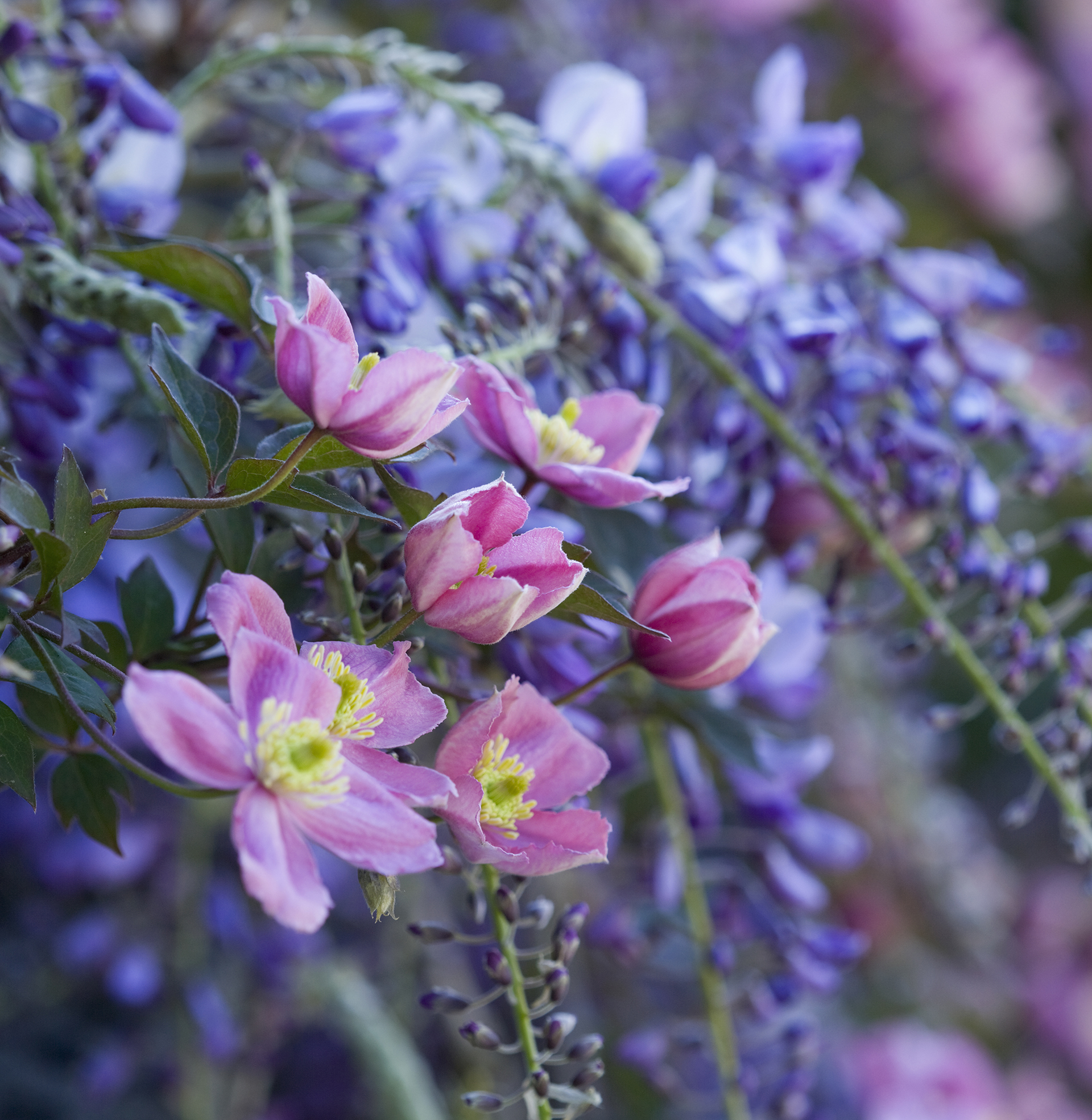
If you only pick one, the mountain clematis (C. montana) (above) is a good choice. Val Le May Neville-Parry, who holds the UK National Collection of C. montana, explains why: 'Montanas flower over a long period in the spring-summer lull, provide nesting for birds, and have heavenly perfume. Two of my many favourites are "Miss Christine" and "Van Gogh".'
Montanas have an informal, romantic habit that lends them to being grown over summerhouses and sheds. The very large forms (referred to by Val as 'beautiful thugs') are ideal for concealing an unsightly garage or long fence.
When to plant clematis
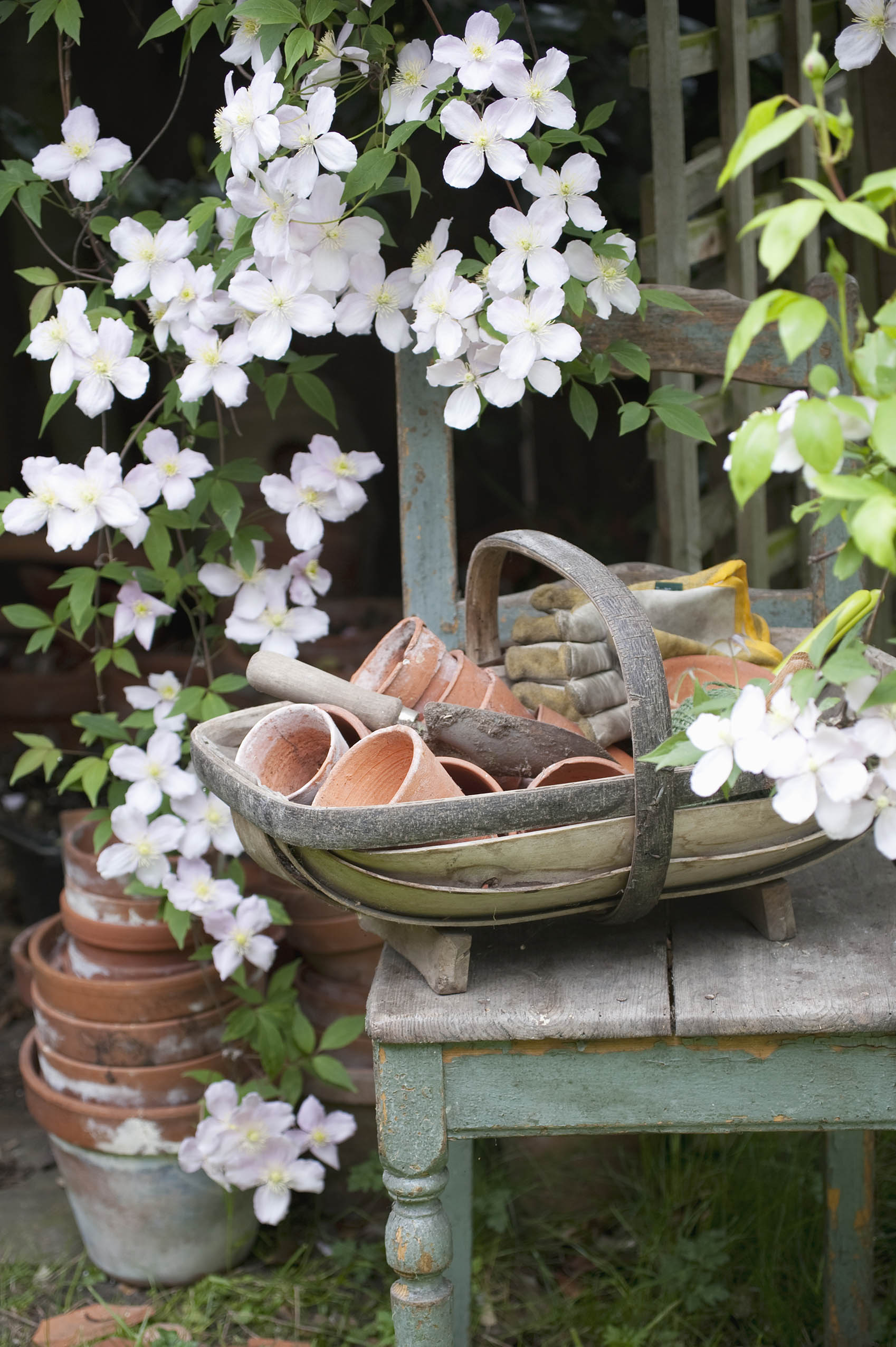
Clematis can be planted at any time of year, but ideally not when they’re in flower. Spring is the optimum time to plant forms that flower in late summer, fall, and winter; and the prime time to plant species that bloom in spring and early summer is fall. The winter season is also a good planting period, unless you live in a very cold climate.
Where to plant clematis
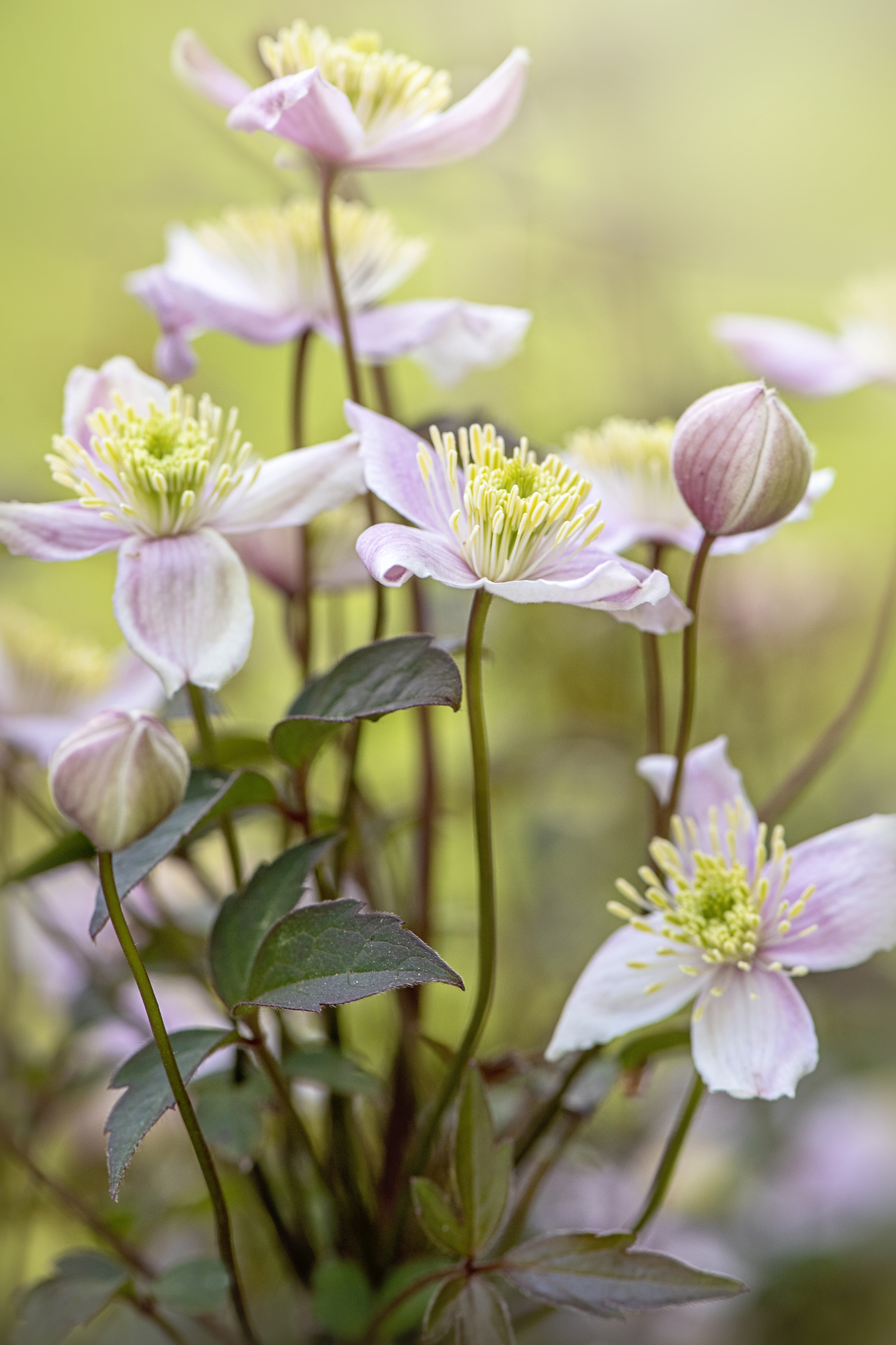
‘I use clematis a lot as a complement to stone walls,’ says Connecticut-based landscape designer Richard Schipul. ‘My clients love the way it hangs over the wall, softening it and adding a punch of color. I also use clematis on metal obelisks, which are great for adding a vertical element and to mark an entrance.’
Likewise, Maryland-based landscape architect and designer Kirsten Coffen often employs clematis to create an impressive entranceway: ‘I love to include a clematis vine where it can be trained up a garden arbor and create a gateway between garden rooms,’ she says. ‘A flowering archway is a focal point that invites you to explore.’
Remember that – when deciding what to give a clematis to twine itself around – many clematis will only hide the structure for part of the year. ’Use clematis with a trellis, arbor, or support that will look beautiful with and without foliage and blooms,’ advises Ohio-based garden designer Ethan McGory, ‘because many clematis put on a lot of growth each year: going from making little impact on a trellis or support, to fully covering it.’
Another thing to think about when positioning your new clematis is that the base of your clematis must be shaded (for example by shrubbery) to keep the roots cool, but the rest of the plant should climb into sun or semi-shade.
'Don’t plant too close to the wall, tree, or fence it is going to climb,' advises Val. 'It needs to be about 3ft (90cm) away. Clematis like well-drained soil that isn’t too dry and isn’t waterlogged.'
How to plant clematis
These step-by-steps to growing clematis will ensure success.
1. Prepare for planting the clematis
Soak the plant by sitting the pot in water for an hour.
While your clematis is soaking, prepare the ground. Clematis like deep, fertile, moist, well-drained soil, so dig well to loosen the earth and fork in organic matter (such as compost).
2. Position the clematis
Lean the clematis at a 45 degree angle towards the wall or fence.
Plant large-flowered cultivars 2 to 4in below the compost level they had in the pot. Most other clematis like to be planted just slightly below soil level.
3. Train the clematis
Provide a structure, such as trellis ideas or pergola ideas, for the twining stems to coil around as the plant climbs.
Growing clematis in pots
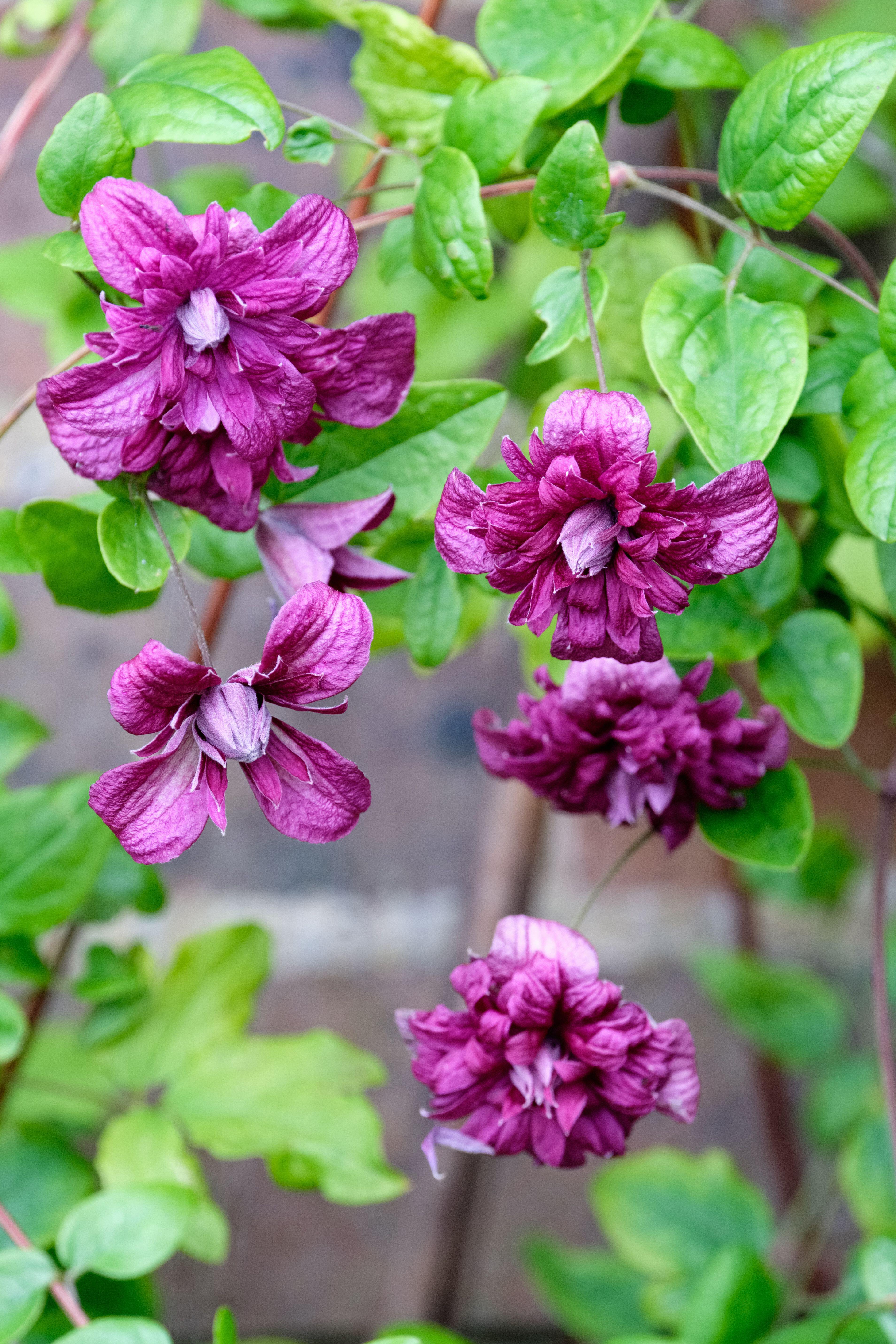
Growing clematis in pots requires a large container to allow for healthy root growth, particularly in the more rigorous varieties. As with planting clematis in borders, soak the clematis first, then prepare a deep – at least 18in deep – hole in the pot, which should be filled with well-drained, rich soil mixed with plenty of organic matter. Position the clematis so that it can lean, either on a trellis behind the pot or against an obelisk or other support within the pot. Ensure the pot is shaded from hot sunshine – clematis like their roots shaded and they will be more vulnerable in a container than in the soil.
How to care for clematis
Water newly planted clematis regularly during dry weather.
Feed with a potassium-rich fertilizer once a year.
Mulch annually with well-rotted manure or organic compost.
Protect young growth from slugs and snails.
Prune clematis and deadhead clematis according to the group your clematis belongs to.
Pruning varies according to the type of clematis you are growing.
What to plant with clematis
Oregon-based landscape architect and garden designer Bethany Rydmark loves growing clematis with roses: ‘Clematis and climbing roses play together well, teaming up to cover trellis, archways, and ramshackle fences. I love the combination of the orange English climbing rose Lady of Shalott and the ivory and purple Clematis florida var. florida 'Sieboldiana'. The repeat-blooming rose puts on a long show, and the clematis brings its fun for much of summer and early fall.’
Sending a clematis into a tree is another great planting combination, says London-based garden designer Claire Mee: ‘Clematis can be grown though any small trees. The lavender-blue 'Perle d’Azur' works especially well weaving through an olive, and goes on flowering through the summer.’
Sign up to the Homes & Gardens newsletter
Design expertise in your inbox – from inspiring decorating ideas and beautiful celebrity homes to practical gardening advice and shopping round-ups.

Lucy Searle has written about interiors, property and gardens since 1990, working her way around the interiors departments of women's magazines before switching to interiors-only titles in the mid-nineties. She was Associate Editor on Ideal Home, and Launch Editor of 4Homes magazine, before moving into digital in 2007, launching Channel 4's flagship website, Channel4.com/4homes. In 2018, Lucy took on the role of Global Editor in Chief for Realhomes.com, taking the site from a small magazine add-on to a global success. She was asked to repeat that success at Homes & Gardens, where she has also taken on the editorship of the magazine.
-
 Martha Stewart's houses – inside her most iconic properties, from Cantitoe Corners to Turkey Hill
Martha Stewart's houses – inside her most iconic properties, from Cantitoe Corners to Turkey HillThe lifestyle guru built her legacy around her homes, some of which are the most recognized homes in modern American history – we explore her portfolio
By Megan Slack Published
-
 These 5 plants can help you get the best, and potentially tastiest, broccoli ever – discover what to plant with broccoli, and what to avoid
These 5 plants can help you get the best, and potentially tastiest, broccoli ever – discover what to plant with broccoli, and what to avoidOur selection of vegetables, herbs, and flowers is perfect for companion planting with broccoli
By Drew Swainston Published